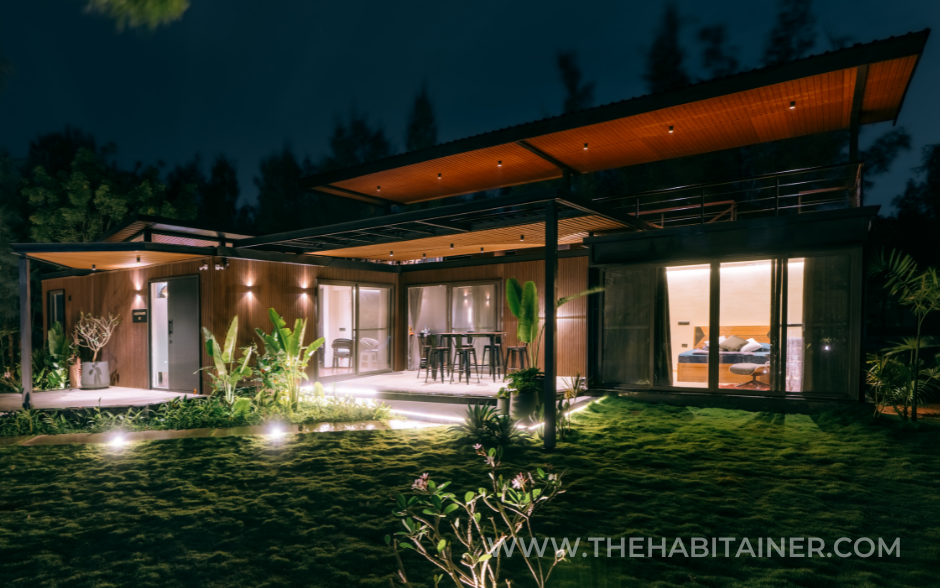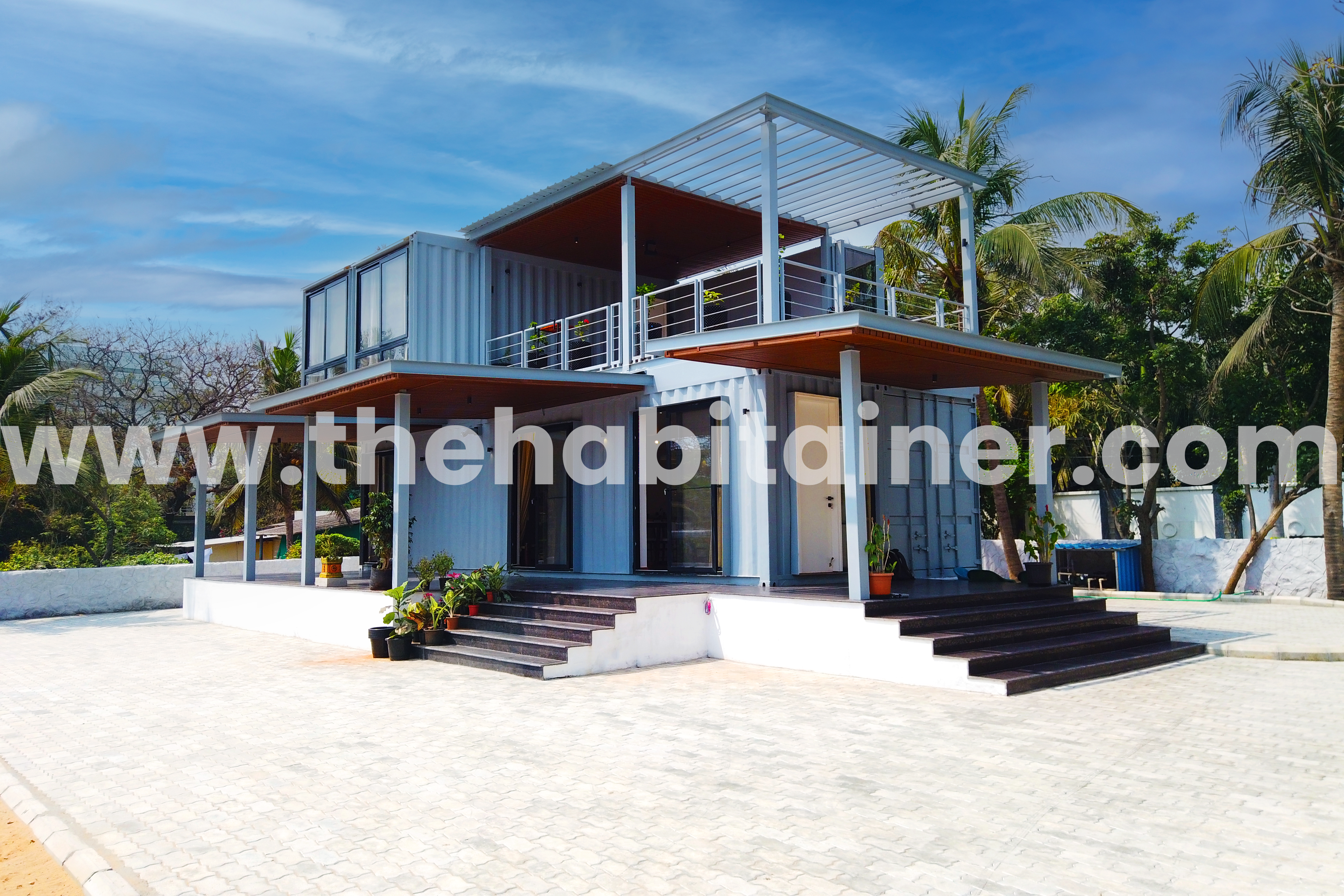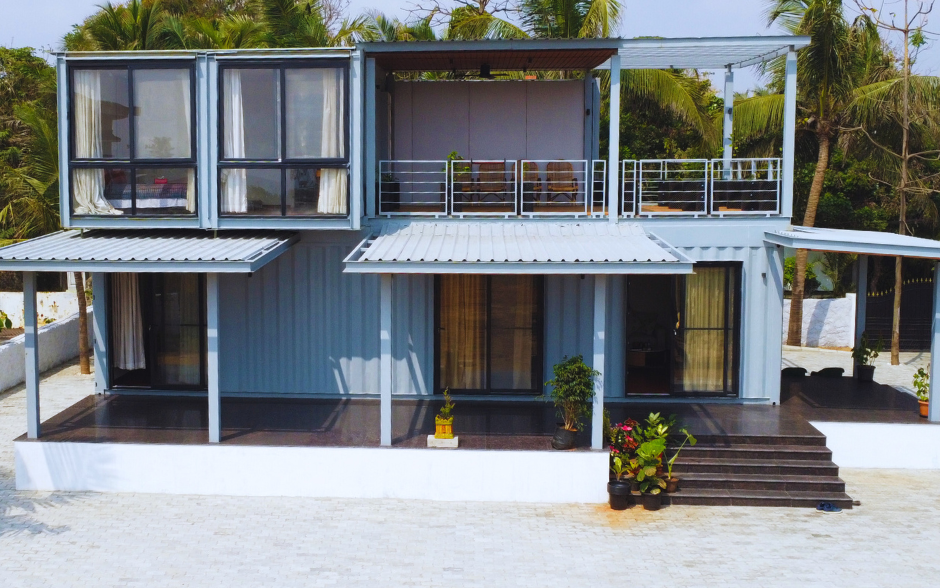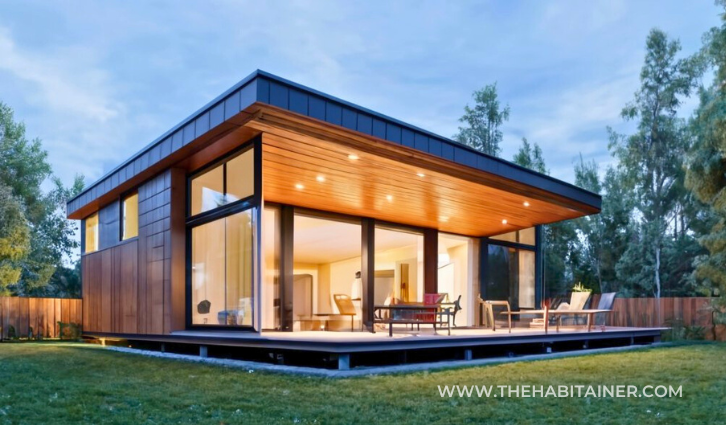
Are you tired of traditional housing options and want to explore something unique? If yes, then container homes are the perfect fit for you. Container homes are made from shipping containers that are converted into livable spaces. This unconventional approach to housing has become increasingly popular in recent years due to their cost-effectiveness, sustainability, and trendy aesthetic. In this article, we will explore the concept of container homes, their advantages, and why you should consider them as a housing option.
Introduction: Container Homes – A New Way to Live
The concept of container homes originated in the 1980s when an architect from California used shipping containers to build a beach house. Since then, container homes have gained popularity, especially in countries where there is a shortage of affordable housing. These homes are not only cost-effective, but they also provide a unique living experience. You can customize your container home as per your needs and preferences. From modern and sleek to rustic and industrial, there are various styles of container homes that can be designed to match your personality and lifestyle.
Advantages of Container Homes
There are several advantages of living in a container home that you should consider before choosing a traditional housing option. Some of the key benefits are:
1. Cost-Effective
Container homes are an affordable housing option as they are made from recycled shipping containers. These containers are easily available and cost a fraction of the price of a traditional house. The cost of building a container home can vary depending on the size, design, and location. However, on average, a container home can cost around $20,000 to $50,000, which is much cheaper than building a traditional house.
2. Eco-Friendly
Container homes are an eco-friendly housing option as they are made from recycled shipping containers. By using these containers for housing, you are not only reducing waste but also reducing the carbon footprint. Additionally, you can incorporate sustainable features like solar panels, rainwater harvesting, and composting toilets to make your container home more eco-friendly.
3. Durability
Shipping containers are made to withstand harsh weather conditions and transportation across the seas. Therefore, container homes are extremely durable and can withstand extreme weather conditions like hurricanes, tornadoes, and earthquakes. Moreover, they are also resistant to pests, fire, and rot.
4. Customization
Container homes provide endless customization options. You can design your container home as per your needs and preferences. From the size and shape to the layout and finishes, you can customize every aspect of your container home. Moreover, you can easily add or remove containers to increase or decrease the size of your home as per your changing needs.
5. Mobility
Container homes are portable, which means you can move your home wherever you want. This is especially useful for people who live a nomadic lifestyle or want a vacation home that can be moved to different locations. Moreover, container homes are also useful for disaster relief efforts as they can be easily transported to the affected areas.

Building a Container Home: The Process
Building a container home requires careful planning and execution. Here is the step-by-step process of building a container home:
1. Design
The first step in building a container home is to design it as per your needs and preferences. You can hire an architect or a container home builder to help you with the design process. Make sure that the design meets your local building codes and regulations.
2. Site Preparation
Once the design is finalized, the next step is to prepare the site for the container home. This includes leveling the ground, laying the foundation, and installing utilities like electricity and plumbing.
3. Choosing the Right Containers
Choosing the right containers for your container home is a crucial step. You need to consider the size, condition, and structural integrity of the containers. High cube containers, which are taller than standard containers, are ideal as they provide more vertical space. It is also important to choose containers that are in good condition and free from rust, dents, and other damages. Moreover, you need to ensure that the containers are structurally sound and can withstand the modifications required to convert them into livable spaces.
4. Modification
The containers need to be modified to make them livable. This includes cutting openings for windows and doors, installing insulation, and adding HVAC systems. You can also add features like skylights, balconies, and decks to enhance the livability of your container home.
5. Interior Finishing
Once the modifications are done, the next step is to finish the interior of the container home. This includes installing flooring, wall finishes, cabinets, and appliances. You can also add personal touches like artwork, furniture, and decor to make your container home feel like a cozy and comfortable living space.
6. Utilities Installation
The final step is to install utilities like electricity, plumbing, and heating systems. This requires professional help as it involves connecting the container home to the grid and ensuring that everything is up to code.

Conclusion: Why Consider Container Homes?
Container homes are a unique and cost-effective housing option that provides endless customization options. From eco-friendliness to durability and mobility, there are several advantages of living in a container home. Moreover, you can customize your container home as per your needs and preferences, which makes it a perfect fit for people who want something different from traditional housing options. So, if you are looking for a sustainable, affordable, and trendy housing option, then consider container homes as your next home.
FAQs About Container Homes
What is a container home?
A container home is a house made from recycled shipping containers that are converted into livable spaces.
Are container homes cost-effective?
Yes, container homes are an affordable housing option as they are made from recycled shipping containers and cost a fraction of the price of a traditional house.
Are container homes eco-friendly?
Yes, container homes are an eco-friendly housing option as they are made from recycled materials and can incorporate sustainable features like solar panels and rainwater harvesting.
Can container homes be customized?
Yes, container homes provide endless customization options. You can design your container home as per your needs and preferences.
Are container homes durable?
Yes, shipping containers are made to withstand harsh weather conditions and transportation across the seas. Therefore, container homes are extremely durable and can withstand extreme weather conditions like hurricanes, tornadoes, and earthquakes.
Can container homes be moved?
Yes, container homes are portable, which means you can move your home wherever you want.



